Engine Company No. 11
Introduction
Text-to-speech Audio
From 1919 to 1953 existed Philadelphia's only all-Black segregated fire department. The brave men who served with Engine Company No. 11 were known to the public and company as the 'leather lungs'. Working alongside their white superiors, the leather lungs were more often than not, placed in the most dangerous of situations when fighting fires. On February 17, 1953, segregation had officially been ruled to end within the fire department due to overstaffing within Engine Company No. 11 and other surrounding departments. The desegregation prompted the creation of six new mixed fire departments in the area. Since the desegregation, the original Engine Company No. 11 fire station building and the brave men who worked for the station have been memorialized through murals, mosaic pieces, and a Pennsylvania landmark plaque.
Images
Firefighter Isaac Jacobs.
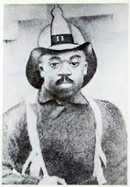
Firefighter Stephen Presco.
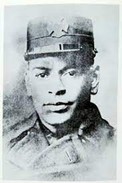
Station 11 Company Photo, Segregated. Circa 1940.
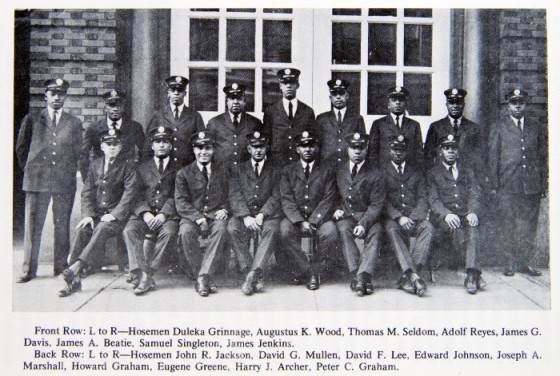
Peter C. Grahm who is standing second from the left, was the first Black lieutenant firefighter to ever be promoted in 1931. Which took place at Station 11.
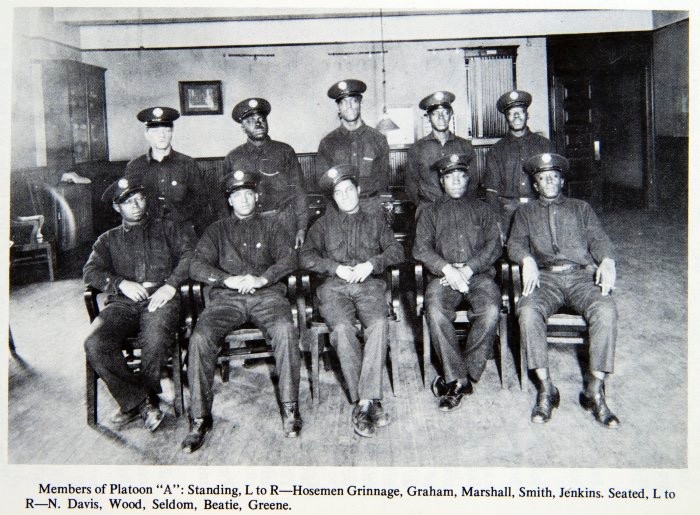
Mural at 601 South Street, honoring W.E.B Dubious and Engine 11.
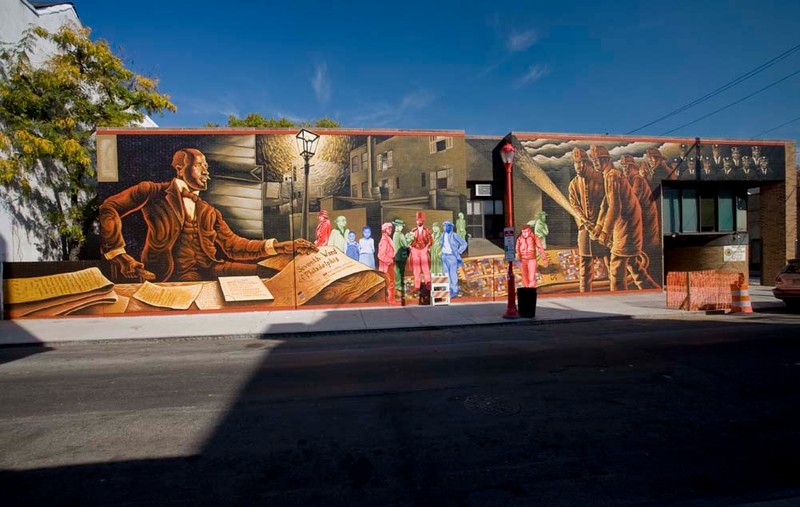
Backstory and Context
Text-to-speech Audio
Engine Company No. 11 was organized in 1871 at 1016 South Street in Philadelphia. [2] Company 11 was just like any other until its history changed forever on April 13, 1886, when Isaac Jacobs was hired as the first African American firefighter in Philadelphia. [1] Jacobs was a firefighter in its loosest term as he was not granted permission to go out with the other men and fight fires. [1] Instead, his duty was originally to be a hoseman but he was demoted for an unknown reason to taking care of the companies horses. [1] This probably explains why Jacobs only stayed at Station 11 until 1891. Luckily, Company 11 switched to a full-paid station in 1970, which means that Jacobs too was the first paid African American firefighter, making his short time at the company worth it. [1]
Not long after Jacobs left the company, the second African American firefighter was appointed on June 8, 1891. [1] Stephen Presco was originally assigned to Engine 17 but 35 days later he was moved to Engine 11 where he was granted the ability to go out and fight fires with the rest of the men, unlike Jacobs. [1] Unfortunately, Presco is historical to the company in a much somber manner, as he was the first African American firefighter to be killed in the line of duty. [3] In 1907, Presco along with 2/3 of the Philadelphia Fire Department responded to a fire at J. Stern & Sons factory on Filbert Street. [1] Engine 11 quickly discovered that their ladders were too short to reach the blaze on the sixth floor and Presco and four other men began to climb the fire escape when it ultimately collapsed and injured them all. [1] Presco was taken to Jefferson Hospital where he suffered fractured ribs, contusions, and internal injuries which lead to his death later that same day. [1] From then on, Presco was known as the "Fireman's Fireman" at Engine 11 for his selfless duties. [1]
Not long after Presco's death, Engine 11 appointed their third African American firefighter on April 10, 1907, William "Bill" Sheaf. [4] From Joseph Marshall's account of his short three months with Sheaf, he claims that Sheaf was highly respected by his fellow members of the company and even his white superiors. [4] Sheaf ended up passing away on February 24, 1924, Marshall's birthday. [4] Though along with Sheaf's appointment came three more unnamed meant that were appointed to Engine 11 between 1907 and 1918. [1] In 1919, the city of Philadelphia ordered that fire departments move to a two-platoon system, which meant that there would now be two shifts of men rather than one. [1] This created platoon A and platoon B at Engine 11, which meant each man worked three 10 hour days with 24 hours off, followed by three 14 hour nights. [1] This implementation was resourceful in terms of the men's workload but also meant that they needed to hire a lot more men immediately, 13 more men were hired and brought the companies count of African American firefighters to 17. [1]
With a large presence of African American men in the company at this time, some of the surviving men felt as though their white comrades were treating them poorly and some felt they were treated equally. [1] Marshall remembers him and the other men being treated fairly,
"We were treated fine. No problems, no problems. Because, you know, firefighting, firefighting is a very dangerous game, and you don't play when the fire's going out. [1]"
One of Marshall's fellow firemen, Clarence Brogdan, who joined Engine 11 after 1945, felt much differently about their treatment than Marshall. He remembers being on the fireground actively trying to put a fire out and having their hose kinked by the white men, which of course put them in a dangerous situation. [1] Which, dangerous situations were not uncommon for these men as they were often placed on the downwind side of fires where they would be inhaling smoke while fighting fires. [1] This is how the men received the nickname 'Leather Lungs", their perseverance in terms of fighting fire while often put in the least desirable situations. [1]
The issue of overstaffing had been an issue across Philadelphia all the way back to 1938, to the extent that men were being sworn in with more men than vacant spots to be filled. [1] The city's local paper, The Tribune had begun making recommendations on how to mitigate the problem to the new Chairman of the Republican City Commission, William Meade Jr. [1] It was after that, that rumors started to circulate about how Meade was going to create two new African American firehouses, Engine 1 and 27. One week later on February 19, 1949, The Tribune had on its front page, "Fire Department Ends Jim-Crow; Organizes Six Mixed Companies. [5]" This meant that men were able to transfer between companies to be closer to home, which many of them were not. [1] The desegregation was not something that could happen overnight but did happen within 4 years, on February 17, 1953, The Tribune proudly published "All-Negro Engine Co. 11 Ended. [1]" Today, the original 1016 South Street location is known as the Willie G. Williams Community Center, providing a multitude of services to the surrounding community as it once did back in 1871. [6] At the new location of Engine 11 located on 601 South Street, you can find the Mapping Courage mural which honors W.E.B Dubois and Engine 11 done by artist Willis "Nomo" Humphrey. [7]
Sources
[1] Phila.gov. Accessed December 9th, 2021. https://www.phila.gov/media/20210519144301/1016-18-South-St-nomination.pdf.
[2] Engine #11: A Journey of Segregation, The Great Migration. Accessed December 9th, 2021. https://greatmigrationphl.org/node/15.
[3] Mandell, Melissa. Engine Company No. 11, Phila Place. Accessed December 9th, 2021. http://www.philaplace.org/story/74/.
[4] Marshall, Interview with Joseph A. Marshall.
[5] “Fire Department Ends Jim Crow.”
[6] Tomar, David. Engine 11 Fire House, OCF Realty. June 28th 2013. Accessed December 9th 2021. https://www.ocfrealty.com/naked-philly/bella-vista/delorean-time-machine-engine-11-fire-house.
[7] Mapping Courage: Honoring W.E.B Dubious and Engine #11, Mural Arts Philadelphia. Accessed December 9th 2021. https://map.muralarts.org/murals/657.
[1]
[1]
[3]
[3]
[7]
